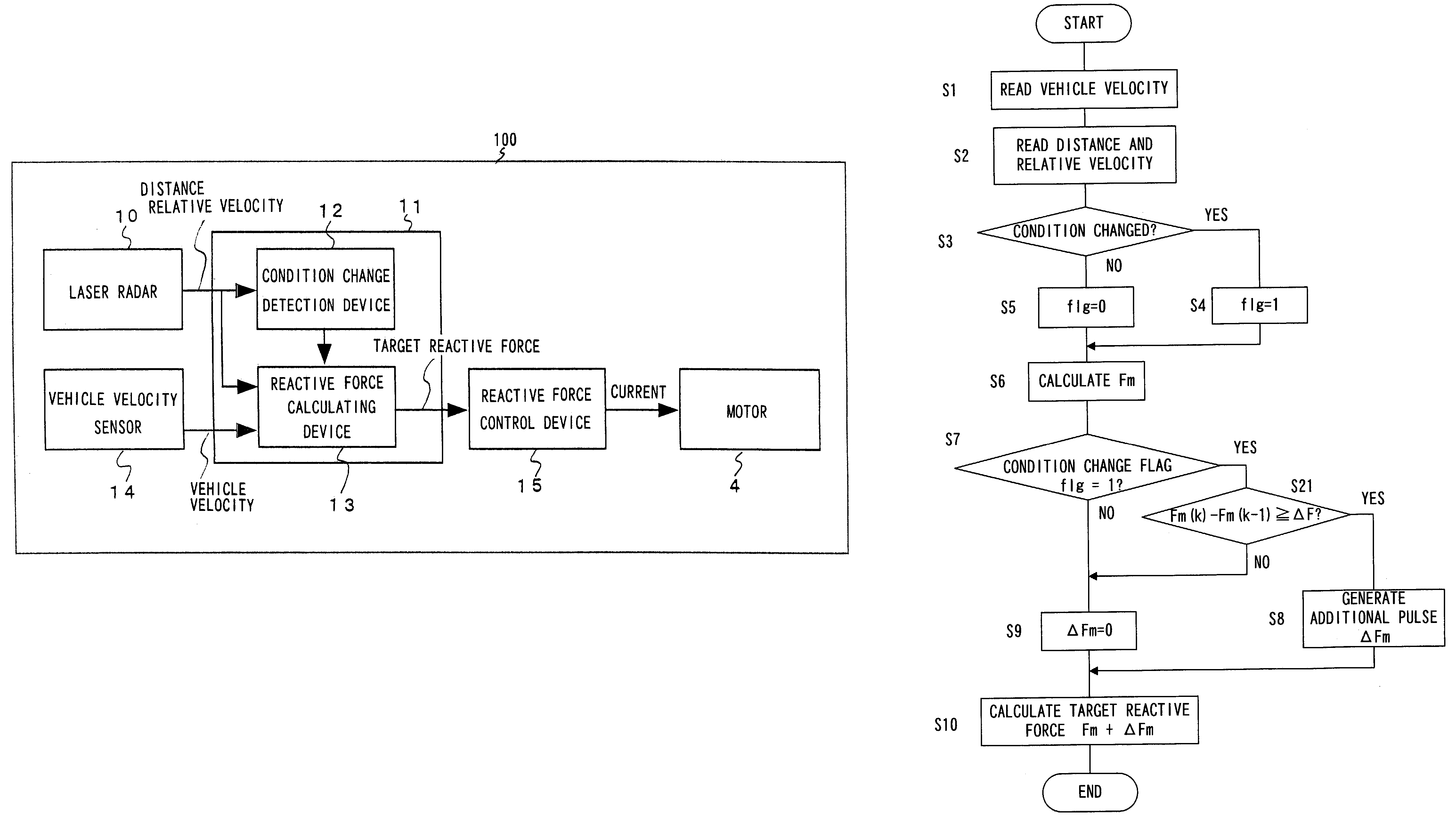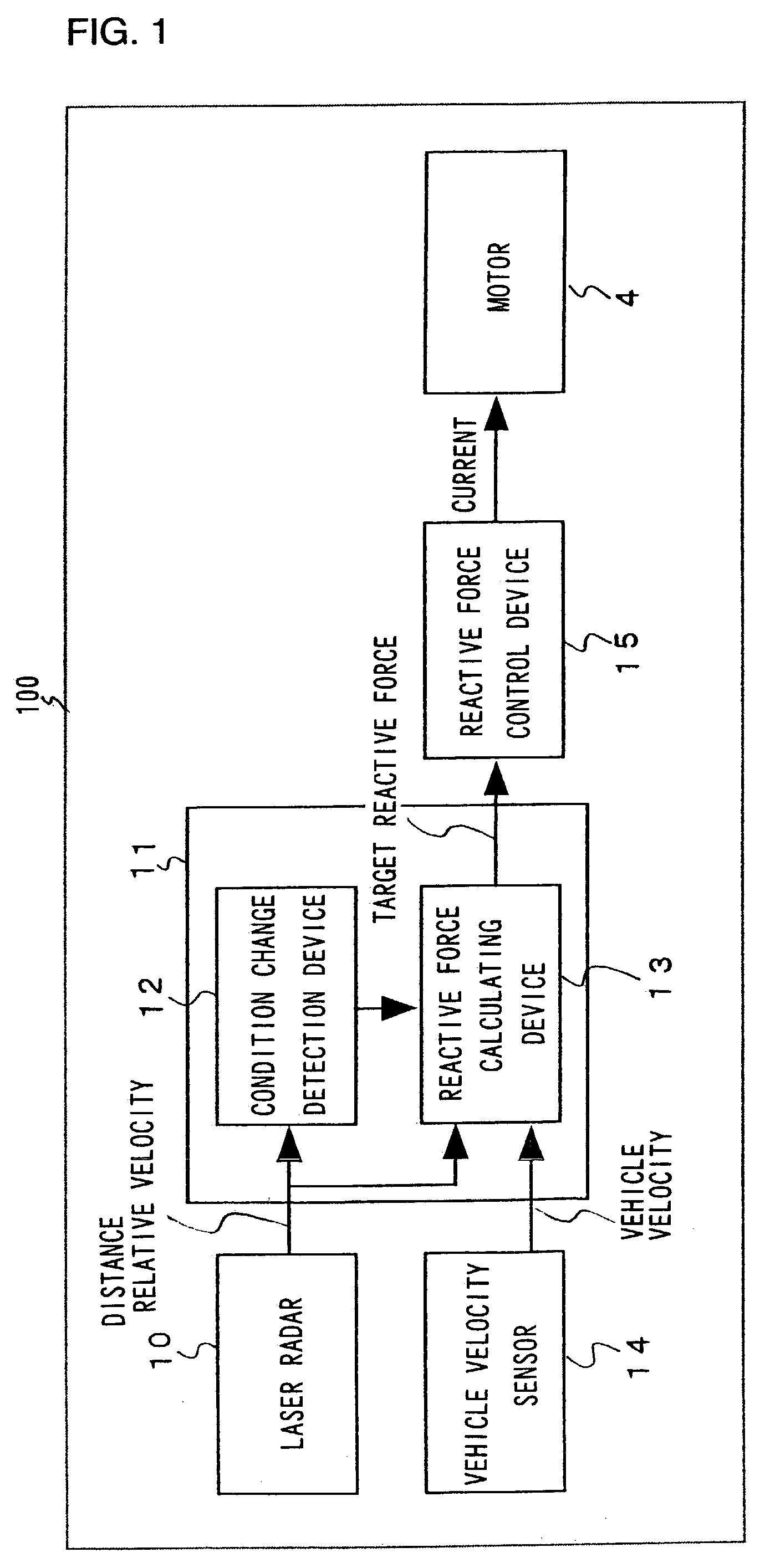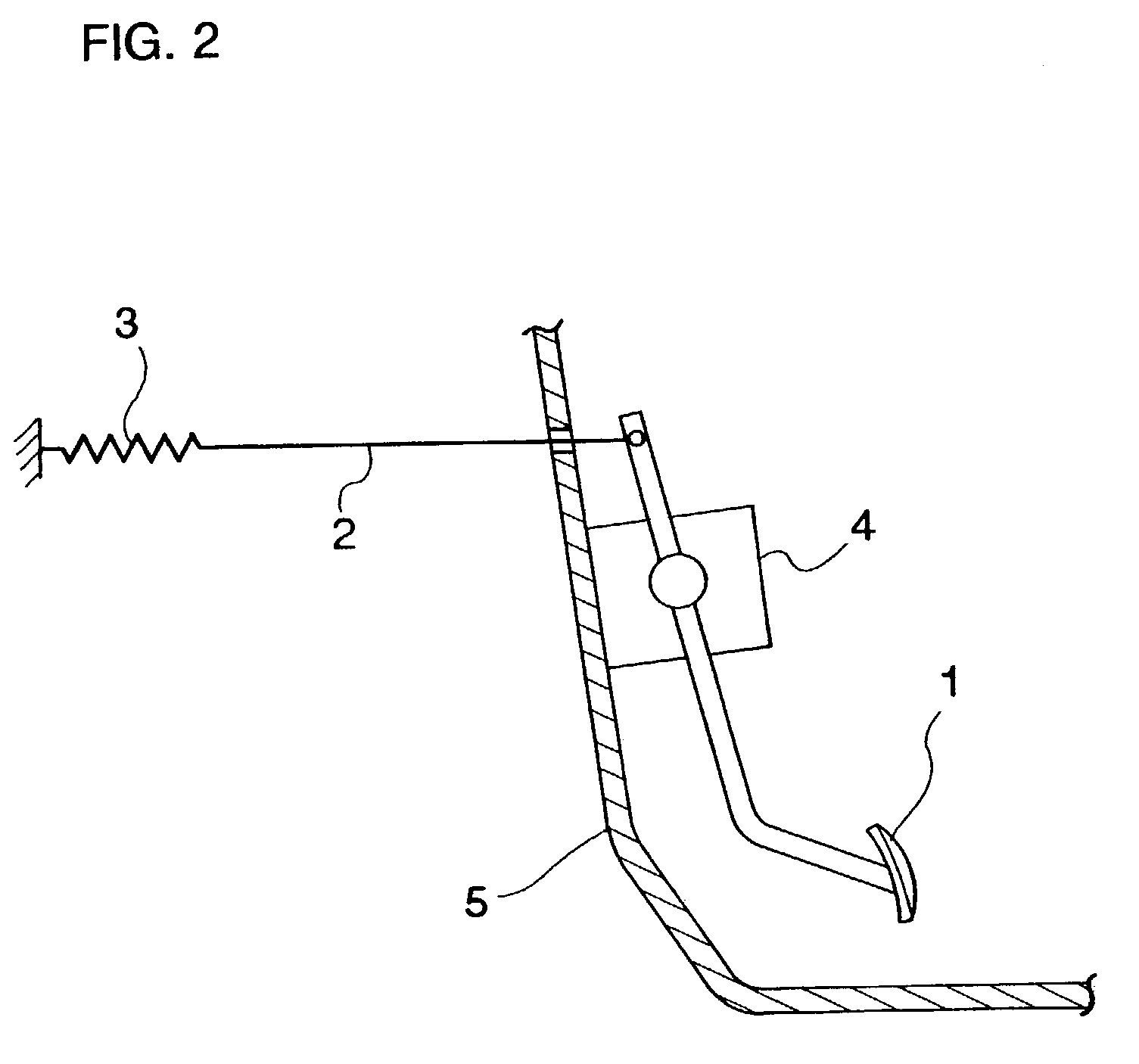Driving assist system for vehicle
a technology for driving assistance and vehicles, applied in the direction of machinery control, process and machine control, instruments, etc., can solve the problems of not enabling the operator to verify whether, and it is difficult for the operator to quickly determine which of the two vehicles
- Summary
- Abstract
- Description
- Claims
- Application Information
AI Technical Summary
Benefits of technology
Problems solved by technology
Method used
Image
Examples
first embodiment
[0031
[0032]The following is an explanation of the first embodiment of the vehicle driving assist system according to the present invention, given in reference to the drawings.
[0033]FIG. 1 is a system diagram of the structure adopted in a vehicle driving assist system 100 achieved in the embodiment and FIG. 2 shows the structure of the essential portion of an accelerator pedal 1 employed in the driving assist system 100. FIG. 9 shows how the vehicle driving assist system 100 is installed in a vehicle. It is to be noted that the following explanation focuses on an example in which the vehicle driving assist system 100 is adopted in a so-called automatic vehicle tracking system in which the distance between vehicles is automatically controlled in conformance to the extent to which the accelerator pedal 1 is operated.
[0034]As shown in FIG. 2, the accelerator pedal 1 is supported by a spring 3 via a wire 2 and a servomotor 4 that is linked to the rotating shaft of the accelerator pedal 1...
second embodiment
[0061
[0062]Now, in reference to FIG. 6, the second embodiment of the present invention is explained.
[0063]The contents of the processing executed by the controller 11 in the second embodiment is differentiated from the first embodiment. FIG. 6 presents a flowchart of an example of the processing procedure of the program executed by the controller 11 in the second embodiment. It is to be noted that in FIG. 6 the same step numbers are assigned to steps in which processing similar to that in FIG. 3 is executed and that the following explanation focuses on the difference from the processing shown in FIG. 3.
[0064]As shown in FIG. 6, after making a decision in step S7 that the condition change flag “flg=1”, i.e., that a condition change has occurred, the operation proceeds to step S21. In step S21, the target reactive force Fm (k−1) previously calculated through an arithmetic operation immediately before the occurrence of the condition change is subtracted from the target reactive force F...
third embodiment
[0067
[0068]The third embodiment of the present invention is explained in reference to FIGS. 7 and 8.
[0069]The specific contents of the processing executed by the controller 11 differentiate the third embodiment from the first embodiment. FIG. 7 presents a flowchart of an example of the processing executed by the controller 11 in the third embodiment. It is to be noted that in FIG. 7 the same step numbers are assigned to steps in which processing identical to that in FIG. 3 is executed and that the following explanation focuses on the difference from the processing shown in FIG. 3.
[0070]As shown in FIG. 7, after making a decision in step S7 that the condition change flag “flg=1”, i.e., that a condition change has occurred, the operation proceeds to step S31. In step S31, the target reactive force Fm(k−1) previously calculated through an arithmetic operation immediately before the occurrence of the condition change is subtracted from the target reactive force Fm(k) calculated through ...
PUM
 Login to View More
Login to View More Abstract
Description
Claims
Application Information
 Login to View More
Login to View More - R&D
- Intellectual Property
- Life Sciences
- Materials
- Tech Scout
- Unparalleled Data Quality
- Higher Quality Content
- 60% Fewer Hallucinations
Browse by: Latest US Patents, China's latest patents, Technical Efficacy Thesaurus, Application Domain, Technology Topic, Popular Technical Reports.
© 2025 PatSnap. All rights reserved.Legal|Privacy policy|Modern Slavery Act Transparency Statement|Sitemap|About US| Contact US: help@patsnap.com



